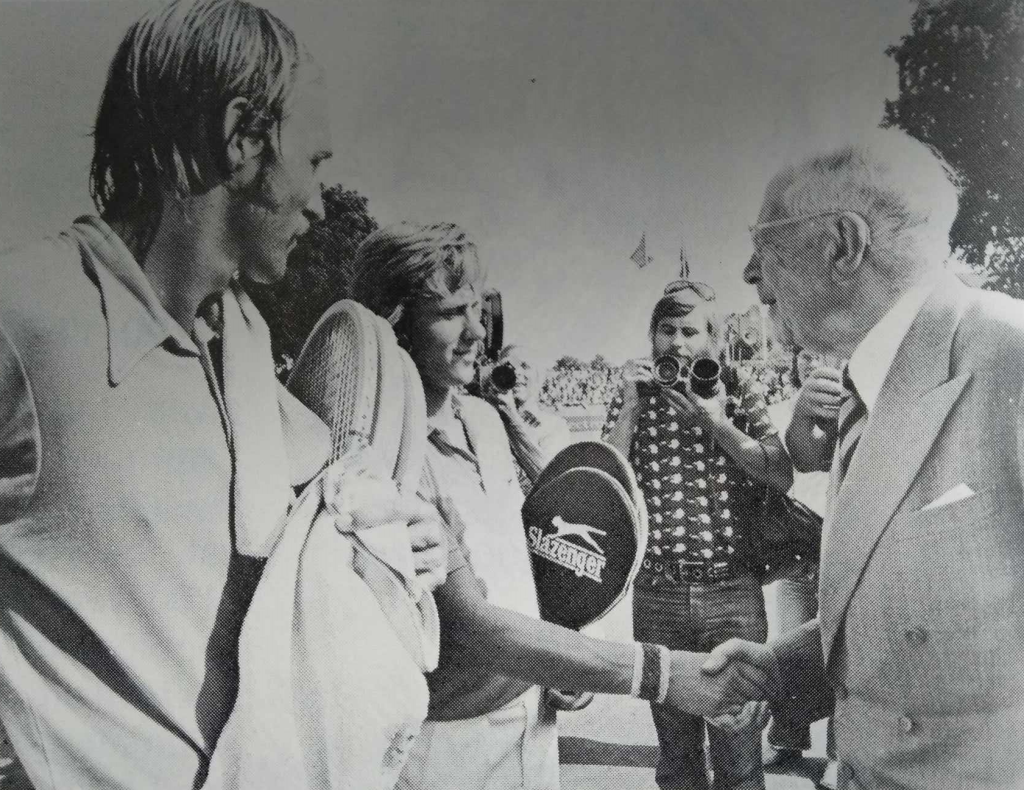Given the excitement over 17-year-old Björn Borg at Wimbledon, you can imagine the splash he made back home in Sweden. The Scandinavian nation had always clung to a position on the edge of the tennis firmament. Now the Swedes had a superstar they could call their own.
The week after Wimbledon, many of the game’s top men headed to the coastal resort of Båstad for the Swedish International, a stop on the 1973 Grand Prix tour. The quick surface change from British turf to European clay wasn’t as harsh as usual, since many of the participants had skipped Wimbledon as part of the ATP boycott. Stan Smith was here, and his doubles partner was none other than Niki Pilić, the Yugoslavian cause célèbre whose desire to make his own schedule had started the controversial ball rolling.
Aside from a tight second-rounder against Jan Kukal, Borg cruised to the semi-finals as the homegrown hero. Surprisingly, he wasn’t the only Swede to go deep. Leif Johansson, a 21-year-old rarely spotted outside of his home country, won six straight sets–including two against the as-yet-unheralded Guillermo Vilas–for a spot in the final four.
Semi-finals day was July 14th, when five thousand patriotic fans packed the grandstand. Among them was Sweden’s 90-year-old King Gustaf VI. The king’s father, Gustaf V, had been a keen player and rabid fan until his death in 1950. Since the 1930s, the royal family had sponsored the King’s Cup competition, coaxing superstars to Scandinavia since before World War II. When tennis stars like Jean Borotra found themselves caught up in that conflagration, the elder Gustav worked behind the scenes to keep them alive.
All the Swedish pride in the world couldn’t save Johansson. He won just three games against Spanish clay-court maestro Manuel Orantes. Borg did better, breaking for an early lead over Smith. The American was one of the best players on earth, but he had never won a clay-court title of note. The venue and the surface suited Björn perfectly.
On the other hand, a hostile crowd in Båstad was nothing compared to what Smith had withstood in Bucharest, where he led the American side to the 1972 Davis Cup title. His serve was impervious to conditions, and it quickly gave him the ascendancy. He recovered the early break, took another for the lead, and never looked back. Big Stan advanced to the final, 6-4, 6-4, 6-2.
Still, Smith was impressed. “All the members of the pro circuit will definitely have another player to fear,” he said of his opponent. Soon, Davis Cup campaigners would come to the same realization about the rising power from Sweden.
* * *
This post is part of my series about the 1973 season, Battles, Boycotts, and Breakouts. Keep up with the project by checking the TennisAbstract.com front page, which shows an up-to-date Table of Contents after I post each installment.
You can also subscribe to the blog to receive each new post by email:
